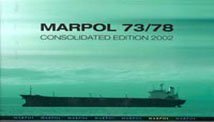July, 2020 - Cylinder lube oils and VLSFO
The increased use of very low sulphur fuel oil (“VLSFO”) following the new MARPOL sulphur regulations has brought with it a number of challenges for ship owners. One such challenge is how best to manage the use of cylinder lube oils with VLSFO to reduce the risk of accelerated wear to engine components. Incidents of this nature are coming to light in growing numbers and Members are therefore advised to pay particular attention to potential issues arising from the use of lube oils.
Marine fuel oils are inherently acidic in nature due to the presence of sulphur - when burned in the ship’s engine, sulphur forms sulphuric acid. Cylinder lube oils are alkaline and are used in conjunction with fuel oils to neutralise the acidity of the fuel, thereby reducing potential damage to engine components such as piston rings and cylinder liners. The appropriate type and quantity (or rate) of cylinder lube oil to be used will depend on various factors such as the brand of engine and the characteristics of the fuel oil consumed.
VLSFO by its very nature has a low sulphur content and therefore a lower acidity than marine fuel oils commonly used prior to 1st January, 2020. This has meant that the corresponding alkalinity in some traditionally used cylinder lube oils (as denoted by the Base Number or BN) may be higher than is required to neutralise the acids and protect the engine. This excess alkalinity has reportedly lead to a number of issues, examples of which are discussed below.
Calcium deposits
A key source of alkalinity within cylinder lube oil is the presence of calcium. Excess or inappropriate use of cylinder lube oil has reportedly caused a build-up of abrasive calcium deposits in and around the liners leading to increased liner wear or scuffing, or ultimately to failure of the piston rings.
Absence of corrosive pitting
A certain degree of acidity is required in the engine to enable corrosive pits to form on the surface of the cylinder liners. Cylinder lube oil is drawn into those pits and thus forms a lubricating layer between the piston and liner. If too much alkaline is present, the acidity level will be insufficient for the pitting to occur. In turn, the cylinder lube oil has no place to accumulate. The result is that only a thin layer of lube oil is present on the liner surface, increasing the risk of friction between the piston and the liner and the resultant liner scuffing.
Potential for disputes
Aside from the risk of physical damage to the ship, this issue has the potential to create legal difficulties for ship owners. It will no doubt add another, unwelcome layer of complexity to arguments on causation in off-spec bunker claims. It may also appear in the form of allegations of unseaworthiness and has the potential to bring about disputes with engine manufacturers and technical managers.
Members are therefore advised to carefully check and record the operating requirements of the specific machinery on each ship in relation to the use of cylinder lube oils with VLSFO and to seek advice from manufacturers or experts where appropriate. Industry awareness of the issue is increasing and it is anticipated that further guidance will be released as lessons are learned. Members are therefore advised to monitor developments closely.
